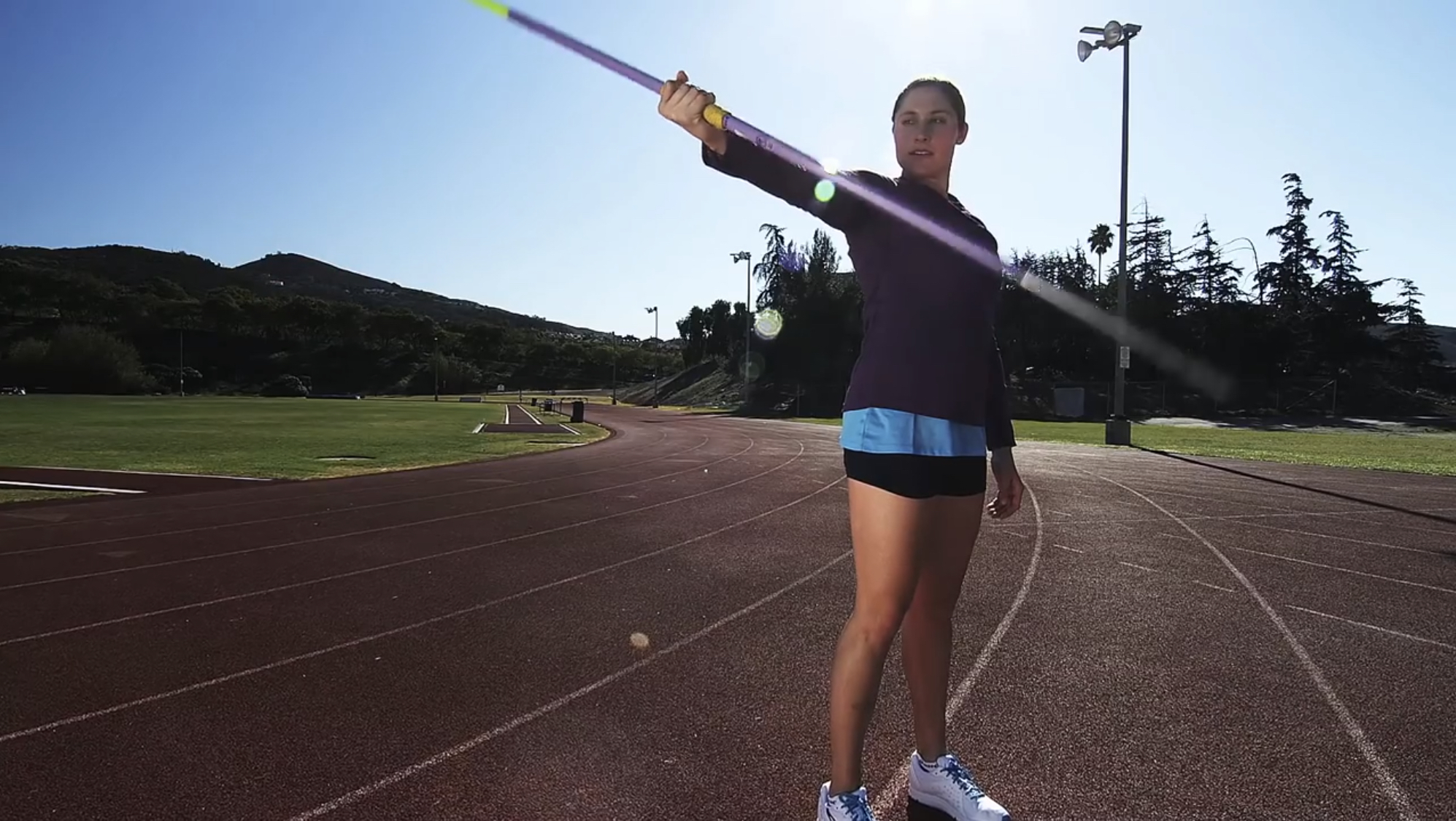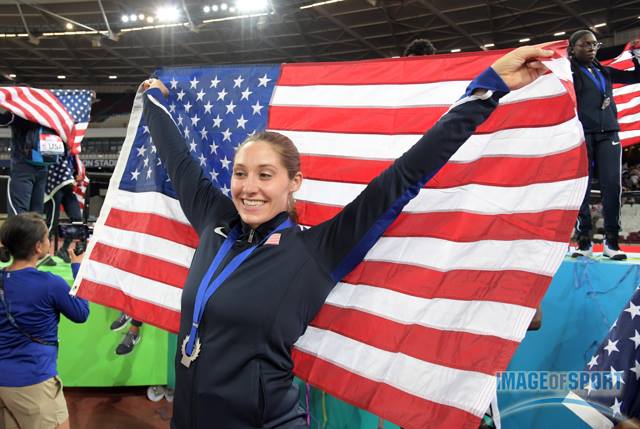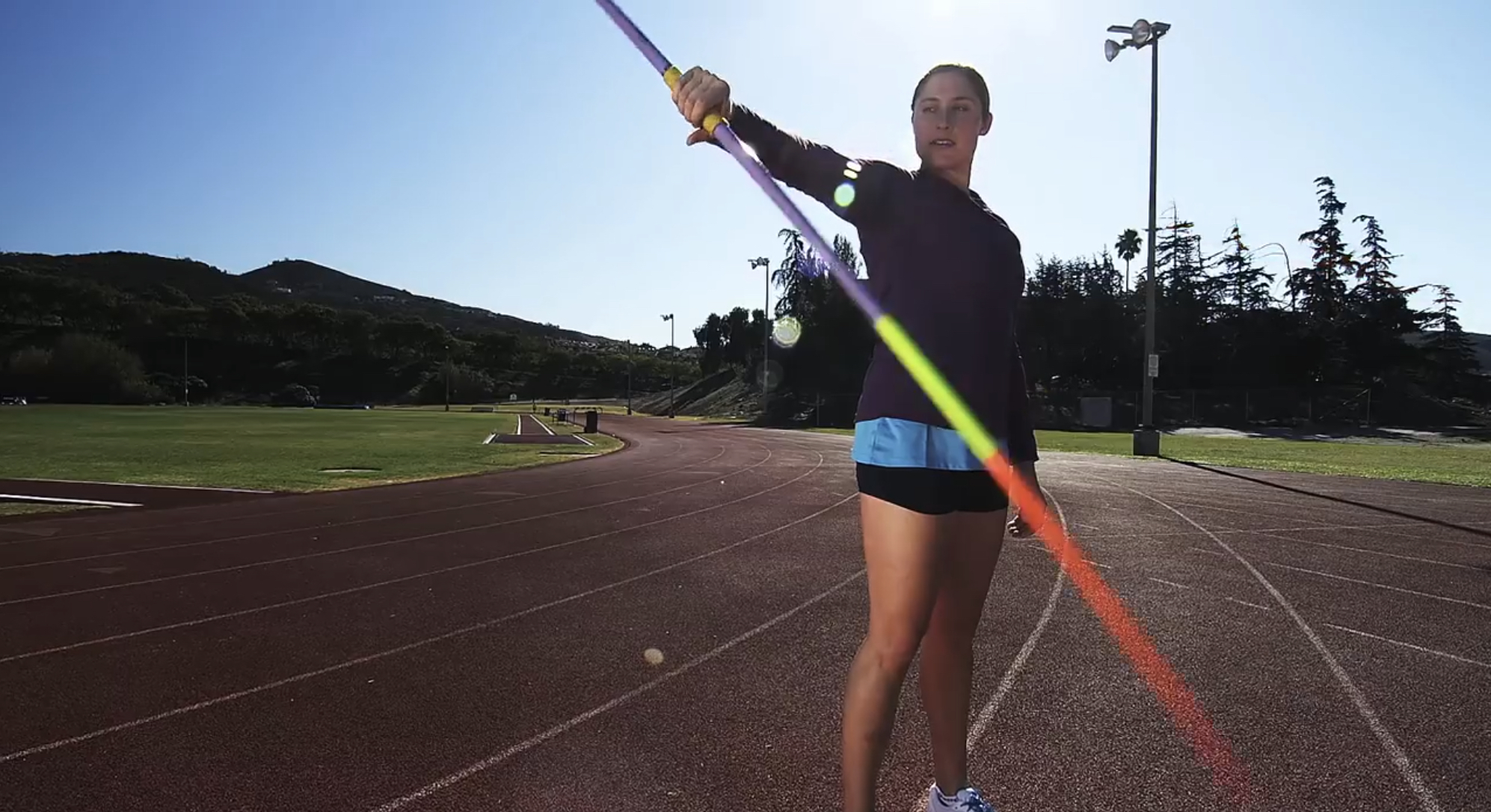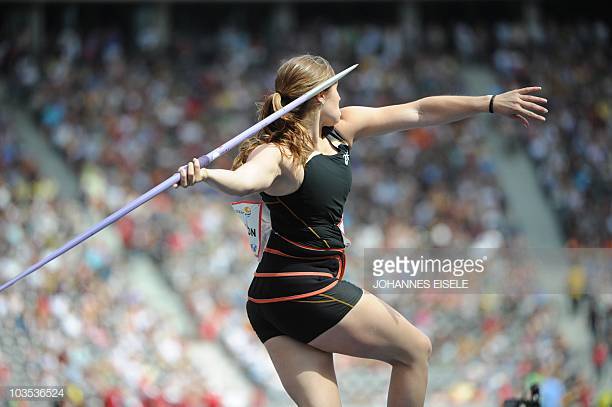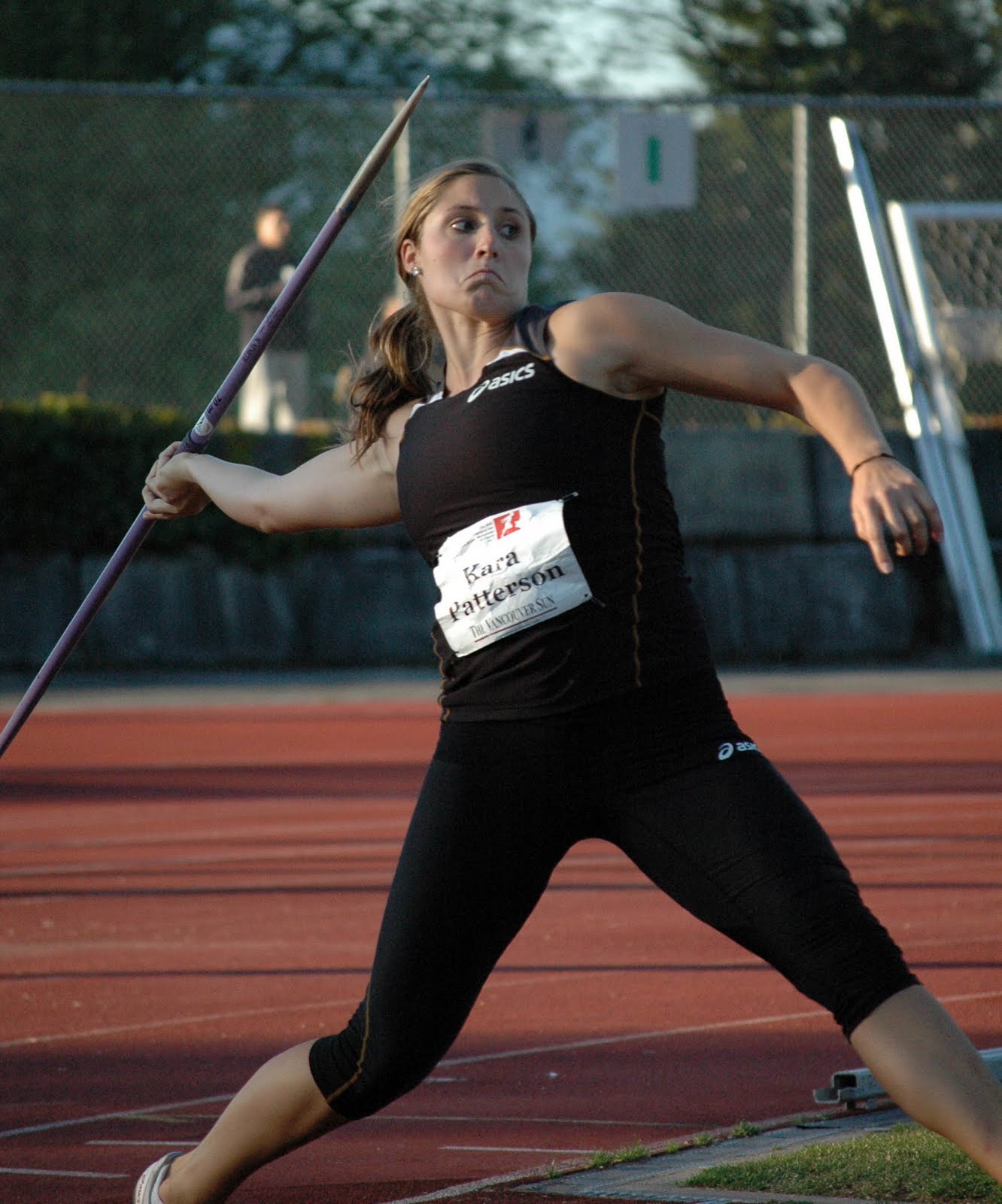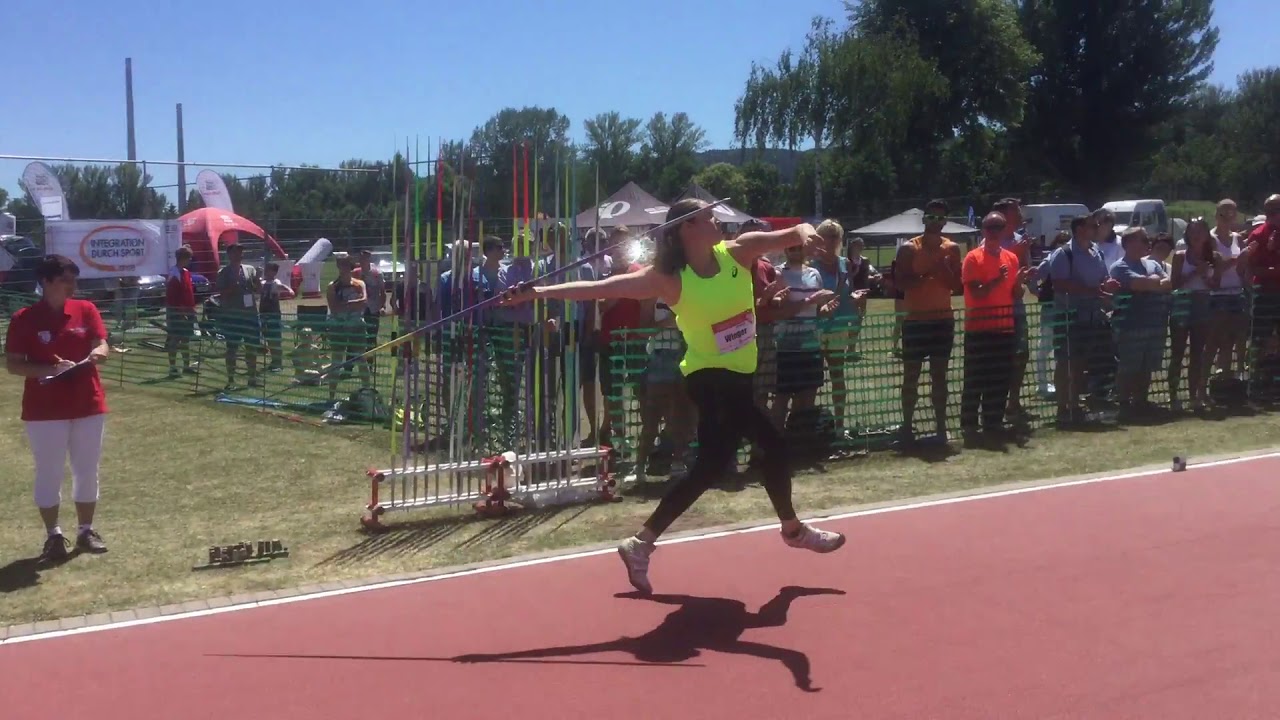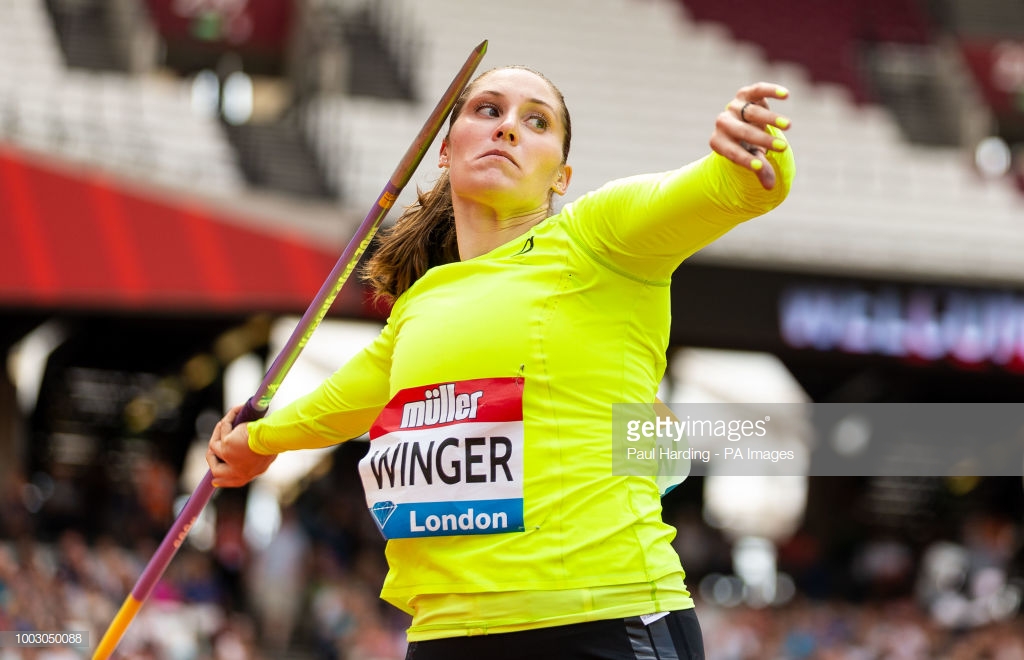To start off, I am not a coach. I’m not your coach! I have coached. I’m pretty good at it if I do say so myself, haha, but I’ve only ever done it in short bursts or at camps. Your coach knows you best, and is aware of the problems that you have. Or maybe you’re aware of the problems that you have, and you just need to work on how to communicate your concerns to your coach in a respectful and constructive way. More on the athlete/coach dynamic next week!
That disclaimer stated, let me put another one out there: We all have different struggles. Each body works slightly differently than the other, and things that have been important for me might not be for you. I can only tell you my experience though, and maybe you’ll learn from it! I’ll tell you about the injuries I have had and the javelin lessons I’ve learned from them, and then some basic super important (in my opinion) javelin technical things.
Injuries I’ve had and the lessons they’ve taught me:
1. Injury: L5 (lumbar/low back) stress fracture.
Lesson: Core stability/lumbar stability/thoracic mobility/rotational fluidity and strength are important.
I’ve written about this injury before, and how rehabbing after it helped put me on the 2008 Olympic team. I used to try and get all of my flexibility from my back! I simply didn’t know any better, and honestly it can look similar for someone to be using their shoulder and engaging their core vs. getting flexibility from their lumbar spine. Simply activating those core muscles in a little bit different way than I was doing it can protect the low back. I had to learn through injury, but maybe you can learn to do lots of core stuff now!
Your core is a cylinder. From about diaphragm height down to your hips, all the way around your middle, is a circular tank of muscles you can train to connect your feet and legs to your throwing arm and hand. Do that. Your lumbar area can rotate, but shouldn’t flex or extend too extremely. Rotational strength is crucial in the uncoiling of the javelin throw, so oblique, twisting stuff is helpful, and best if done in a nice, fluid motion like you want the javelin throw to be. Balance training really helped me after my back injury. The movement you want in your back is in the thoracic area (shoulder blades/between your shoulders). Train thoracic mobility (flexion (bending forward), extension (bending backward), and rotation (turning either direction)). Do that with a javelin in your hand or across your back.
Train your core in ways that make sense for how you know you need to move in an optimal javelin throw, but also train your core in normal ways! There is a crazy plethora of options out there.
2. Injury: Left Anterior Cruciate Ligament tear (in the course of blocking)
Lesson: Healthy knee movement patterns are important, but dorsiflexion, hip mobility, and glute stability are hacks!
I had never been taught how my knees should move before I tore my ACL. I obviously didn’t do anything intentionally to put my knee in a valgus position and experience a non-contact rupture of the ligament, but I also hadn’t trained my nervous system and musculature NOT to be in that position. Try your best not to tear your ACL in order to learn this lesson, please!
Since my bone-patella-bone, ipsilateral autograft reconstruction in 2012, I’ve been amazed at the response the body can have to smart, intense rehabilitation (and now that I’m fully healed, prehabilitation) exercises. I had no idea how important glute stability was to knee health, and perhaps the misfiring of my left glute was a piece of my injury puzzle in the first place. Keeping an eye on the dorsiflexion (toes up) of your ankles is a good idea for knee health as well. Hip mobility is huge for getting your legs into the correct positions without asking too much of your vulnerable knees.
There are so many supporting factors to knee health that I was unaware of, and those factors can enhance your javelin throwing anyway. Train healthy knee movement patterns (good squat mechanics, proper patella tracking and mobility, VMO function), and enhance those patterns with dorsiflexion for good reaction to the ground among other things, hip mobility for dynamic and efficient crossovers, and glute stability so that your block transfers energy into that solid core you built, above.
3. Injury: Right shoulder impingement.
Lesson: Prioritize flexibility in the shoulders (duh).
I had a left shoulder repair surgery in 2015, but I actually had a lot of issues with my right (throwing) shoulder afterward. I think the repaired rotator cuff tendons on the left side just played tug-of-war with my right shoulder across my back throughout the healing process, and I had a lot of pain in the throwing motion as a result. I should’ve prioritized throwing shoulder flexibility throughout that surgery and recovery process, because it’s my bread and butter!! Yours too.
We get dynamic flexibility from the actual act of throwing the javelin, in gymnastics movements, and in some lifts. But there is a TON you can do to retain that flexibility in static ways as well. Sit on the ground and reach your arms long behind you for minutes at a time. Do a bunch of supine (face up) hand and elbow planks and kill two birds with one stone (shoulder flexibility and core/glute function). Add javelin stretches in even on non-throwing days. Put your hand flat on a wall and turn your body away from it to stretch the front of your shoulder in a sort-of throwing position.
If you’re naturally flexible like me, it can be easy to take it for granted. Keep any flexibility you have for as long as you can by being proactive about stretching. I love my nightly rolling and stretching sessions with Maddie the Dog!
She “helps” me stretch like any good pet would.
Important Technical Stuff:
1. Right to Left touchdown time (if you’re right-handed).
Decrease it. Get your left foot down as fast as possible after your impulse/penultimate/whatever you want to call it. For me, this means learning how to let the ground come to me, not paw down and back at the ground as I’m moving into my block, because that action just pitches my upper body forward and actually extends my left leg rather than letting it snap down and become a block leg. Driving my right knee down to the ground and turning my right ankle over also helps me get my block down faster. Forcing yourself to need the stability of your block leg (by turning over your right) means it will usually show up for you!
Whatever you need to do to figure out how to have a faster right-to-left touchdown is what you need to do. Get creative. Only focus on that cue for an entire throwing session/week/month of training. Do some sprinting accelerations and listen to the sound of your feet striking the ground in faster succession with each phase of speed. Learn how to make your feet hit the ground faster at the end of your approach.
2. Acceleration.
What a nice segue! The point of your approach is to build speed to put into the implement to make it fly further. Therefore you must find a way to transfer that speed into said implement. That is what all of your technique is for (sequencing of body parts and positioning), but putting speed into the implement starts with accelerating down the runway.
Is your approach long, but you go the same speed the whole time? Maybe shorten it and speed up gradually. Do you have a short approach, but you sprint out of the back and are then out of control when trying to hit a block? Slow down at the back. Accelerate as you go.
You want to accelerate ALLLLL the way through the throw. I watch a lot of people (and I’m guilty of this as well and am focusing on relearning it right now) accelerate TO their block and not through the throw. Hit that block and then KEEP accelerating the rest of your body around and over it until you finally release the javelin. Block hits first, then the chest can drive through like crazy. Accelerate all body parts into the javelin!
3. Strong posture and javelin control.
Going back to a nice core! This doesn’t mean you need a six pack to throw far. Also please see my post on controlling the position of your hand. You can accelerate nicely, then have a fast right-to-left transition, but if the javelin is pointed ninety degrees to your right, your throwing hand is by your hip, and your upper body is pitched forward, the implement will land pretty close to you.
Stand up nice and tall. You can lean back a little bit if you have that control. Do TONS of practice crossovers so that your upper body stays quiet while your legs are strong and powerful and fluid in a lateral plane. Dana likes to equate javelin throwers to icebergs: Beautiful and impressively still above the water (hips), dangerously busy and powerful and strong below.
Hold heavy stuff up behind you to train arm and hand control. Maybe play some javelin golf. Get creative to learn how to move around in explosive ways, but keep your core and arm in control of the javelin. You have to throw it right to throw it far, and that starts with holding it in the right place (tip by your eye and fairly parallel to the ground).
4. Keep the shoulders closed as long as possible.
“Closed” means perpendicular to the foul line at the end of the runway. The javelin has rotational components, even though we run in a straight line! You want your shoulders to stay closed as long as you can keep them that way, because that means that your throwing shoulder and hand will be pointed backwards and away from the sector, and you’ll be building stretch reflex across your left hip/core/right shoulder/entire right arm for a long long time. That stretch translates to distance.
Hit your block as fast as you can, maybe by driving your right knee down to the ground like me. Driving that right knee down means your right hip will drive through, solidifying your left block leg even more than it already is. As your right hip drives through, energy is transferred to your core. Then, your left arm can start to swing open, initiating the uncoiling and sling of your right shoulder/elbow/hand, followed by the javelin soaring away from you in a gorgeous little undetectable dot.
If your shoulders open to the sector early, you shorten your pull. Keep those shoulders closed and give your entire body a chance to help you throw far. Being open with the shoulders not only decreases your distance, but likely hurts your back. Or elbow. Or pec. Or more.
5. Keep your feet on the ground.
Seems simple, but I struggle with this sometimes, especially post-knee injury. People want to follow through so badly (or just relieve pressure from that block leg), but you get the energy you put into the javelin from applying force to the ground. Keep the block leg firmly planted and turn turn turn turn the right leg and hip for as long as you have that javelin in your hand. Watch Johannes Vetter!!
So. Move gradually faster down the runway. Control your upper body and javelin position. Get your block down as fast as possible after your impulse. Keep those feet on the ground, and keep your shoulders closed to keep the javelin back as looooong as you can.
Talk to your coach. He or she knows you and can likely help.
Little efforts every day add up to big changes. If I skip a day of stretching my hip internal rotation lately, I’m sorry during my next training session. Neglecting core work for a few days means my back is sore after my next throwing session. If I don’t get in the pool once a week, my elbow misses the slight distraction it experiences when I pull on the water, and I don’t feel quite as fluid when I pick up the javelin again. Take the time to notice what your body needs and give it that. Journaling is a good way to pick up on both patterns that make you feel good and not so good. Pay attention to what is helpful, and do those things! Be intentional.
